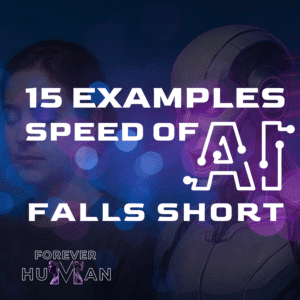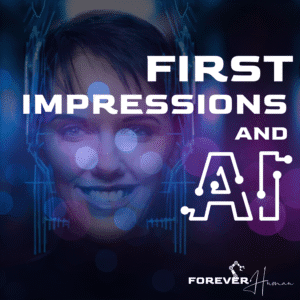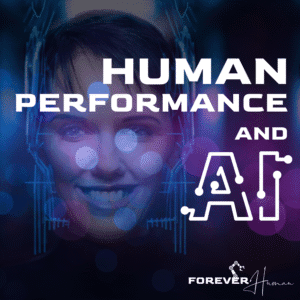Still Leading with Old Habits? AI Leadership Demands a New Playbook

You can have the latest tech stack, AI dashboards, and automated workflows—but if your leadership mindset hasn’t evolved, you’re simply running a 2025 company on a 2010 operating system.
AI is no longer a future concept. It’s here. It’s embedded. It’s shaping how decisions are made, how teams communicate, how customers experience value. And in this new reality, AI leadership isn’t about who knows the most. It’s about who adapts the fastest.
The problem? Too many leaders are still trying to scale yesterday’s habits with tomorrow’s tools. And it shows. In the metrics that don’t tell the whole story. In the trust that’s quietly eroding. In the moments when AI delivers the facts, but the leader fails to deliver the meaning.
KEY TAKEAWAYS
- AI leadership demands a mindset shift—not just a software upgrade
- Being data-driven doesn’t mean being emotionally disconnected
- Trust is still a leadership currency; AI can’t earn it for you
- Emotional intelligence is now a strategic advantage
- Accountability can’t be outsourced to an algorithm
- Surveillance tools are not a substitute for cultural clarity
- Readiness for AI starts with people, not platforms
Data-Driven Isn’t the Same as People-Led

Yes, AI gives you dashboards. But do you know what those dashboards don’t show? Disengagement. Burnout. The silent resignation happening in a room full of pretend smiles.
AI leadership means knowing how to read the data and the room. It means understanding that numbers are indicators, not answers. That behind every performance score is a person. And behind every algorithmic decision is an emotional ripple.
Dashboards don’t tell you why the star performer suddenly checked out. They don’t catch the pause before a tough question or the tension in a team’s silence. They don’t reflect the hesitance in a hallway conversation or the real reason someone turned off their camera.
AI can’t decode tone shifts, cultural dynamics, or subtle forms of disengagement. And it shouldn’t have to. That’s leadership’s job. Not to compete with the algorithm, but to complement it. To bring context, nuance, and emotional awareness where raw data falls short.
Data should inform, not replace, your judgment. Your job as a leader isn’t to be the most efficient calculator in the room. It’s to be the most trusted interpreter—the one who sees beyond the screen.
AI reveals patterns. Great leaders reveal meaning.
Sylvie di Giusto
AI Doesn’t Break Trust—Leaders Do

When employees fear being watched, analyzed, or predicted, it’s not AI they distrust. It’s the person who chose how it would be used.
AI leadership means owning the emotional impact of your tech decisions. If you roll out AI tools without clarity, communication, or consent, don’t be surprised when your team pulls back.
Trust doesn’t erode overnight. It dies slowly in unanswered questions, vague policies, and decisions made behind closed dashboards. It withers when employees feel like they’re being optimized instead of understood, or when they sense they’re becoming data points instead of trusted professionals.
To build trust in an AI-integrated workplace, leaders must be radically transparent. Communicate not just what AI does, but why it exists in the workflow. Invite input. Admit limits. Share the reasoning behind the tools and the safeguards in place. And—most importantly—stay open to feedback when it doesn’t go well.
Want your people to embrace AI? Show them you’re not using it on them—you’re using it for them, and ideally, with them. Because no tool breaks trust on its own. That’s a leadership decision. And so is every opportunity to repair it.
The algorithm is just a tool. The intent is yours.
Sylvie di Giusto
The New Status Symbol in AI Leadership? Emotional Intelligence

Forget corner offices. In the future, your real status symbol is how well you manage emotions—yours, and everyone else’s.
When AI handles the transactional, what’s left are the moments that can’t be automated: conflict, nuance, uncertainty. That’s where emotional intelligence steps in. Can you read what your team isn’t saying? Can you calm chaos instead of fueling it? Can you admit you don’t know—and still hold the room?
True AI leadership is measured not by how much you know, but how well you listen. Not by how fast you respond, but how intentionally you pause. Emotional intelligence in leadership isn’t just about empathy; it’s about timing, tone, and knowing when to let silence speak.
And here’s what most dashboards won’t tell you: fear spreads fast in change. And AI brings change. It brings ambiguity, ambiguity brings stress, and stress tests trust. Emotional fluency helps you manage that invisible climate—the undercurrent of human tension AI simply doesn’t track. And that emotional fluency? It speaks louder than any line of code—and resonates longer than any metric ever will.
The best leaders today aren’t the most technical. They’re the most emotionally fluent.
Sylvie di Giusto
You Can’t Delegate Accountability to an Algorithm

AI made the recommendation. The tool flagged the issue. The system approved it.
That’s all great—until something goes wrong. Then what?
True AI leadership means standing in the decision, even when the data led you there. It means not hiding behind a platform or blaming the process. Leaders don’t defer responsibility to dashboards. They absorb it. And then they explain it, transparently.
But accountability isn’t just reactive—it’s proactive. In a world where AI makes suggestions faster than most leaders can blink, true leadership requires pressing pause. It means asking: Should we do this? Does this align with our values? Are we solving the right problem, or just the most convenient one?
And when mistakes happen—which they will—it’s not about pointing to the model or the system architecture. It’s about stepping forward and owning the human choices embedded in those outcomes.
Your team doesn’t expect perfection. They expect presence. They expect to know someone is watching with both eyes open—not just at the numbers, but at the meaning behind them. Don’t use AI as a shield. Use it as a lens. And when the lens is wrong? Own the view—and clean it yourself.
You can share the workload with AI. But not the consequences.
Sylvie di Giusto
Surveillance Isn’t Strategy—And It’s Definitely Not Leadership

Tracking keystrokes, monitoring logins, measuring screen time—this isn’t strategy. It’s surveillance. And it tells your team one thing: You don’t trust them.
AI leadership requires more than control. It requires culture. A healthy culture is built on autonomy, psychological safety, and shared purpose. Surveillance sends the opposite message: that people are resources to be managed, not humans to be empowered.
If your employees feel watched but not supported, informed but not heard, they’ll perform—but they won’t stay. And those who do stay might stop bringing their best ideas. Because when people feel like they’re under a microscope, they don’t innovate, they conform. They don’t challenge flawed systems, they avoid them. Fear might produce compliance, but it never inspires greatness.
Instead of tracking productivity through activity, leaders should cultivate environments where trust is reciprocal and outcomes speak louder than hours. That starts with asking better questions: What’s the story behind the screen time? What’s driving the behavior we’re trying to measure?
You can’t automate your way into loyalty. You earn it by making people feel seen, not scanned. And when you get that part right, you won’t need surveillance. You’ll have engagement.
Surveillance breeds silence. Leadership demands dialogue.
Sylvie di Giusto
Being "AI-Ready" Isn’t a Tech Question. It’s a People Question
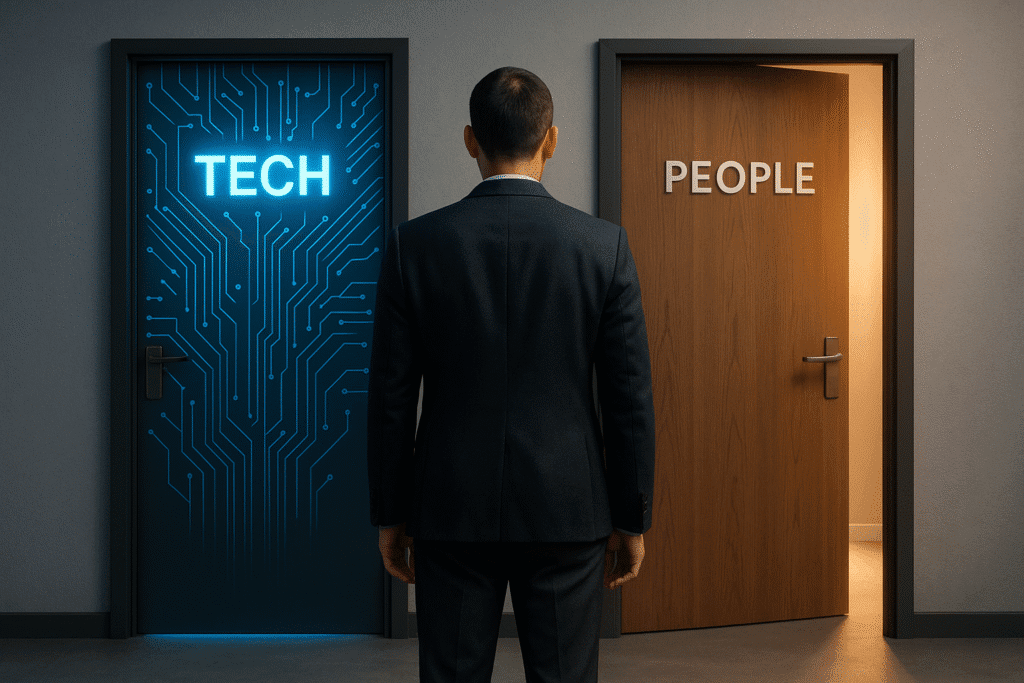
Want to future-proof your leadership? Don’t just invest in platforms. Invest in people.
AI leadership isn’t about how quickly you adopt tools. It’s about how intentionally you prepare humans to coexist with them. Are you training your team to think critically? To adapt? To ask better questions? To challenge when something feels off?
Being AI-ready isn’t about tech stacks or integration timelines.
It’s about psychological safety, learning agility, and human resilience. It means empowering employees not only to work alongside AI, but to question it, refine it, and improve its outcomes.
It also requires you, as a leader, to shift your role. You’re no longer the sole expert. You’re a facilitator of growth, a translator of complexity, a protector of meaning in a world obsessed with automation.
Because if your team doesn’t feel ready, it doesn’t matter how advanced your systems are. AI doesn’t lead. People do. And the companies that will win aren’t just technologically mature. They’re emotionally intelligent, culturally aware, and deeply human. That readiness can’t be coded. It has to be cultivated.
Culture—not code—decides whether AI becomes a tool or a threat.
Sylvie di Giusto
AI Leadership Starts Where the Code Stops
You can automate decisions. You can scale processes. You can even outsource tasks that once defined your value. But the one thing you can’t program is presence.
AI leadership begins the moment you stop asking, “What can AI do?” and start asking, “What do people need from me now, more than ever?”
ACADEMIC INSIGHTS
HOT OF THE PRESS
Swiss Business School | 2025
The Impact of AI on Evolving Leadership Theories and Practices
ESCP Business School | 2025
Artificial Intelligence and Emotional Intelligence: The New Frontier of Human-AI Synergy
Harvard Kennedy School | 2023
Leadership Development in the Age of Artificial Intelligence
Forbes (Coaches Council) | 2025
AI Leadership: The Hard Truth No One Wants to Admit
Forbes | 2025
The Rise of AI Resentment at Work: Why Employees Are Pushing Back
Business Insider | 2025
Companies’ Biggest Barrier to AI Isn’t Tech — It’s Employee Push‑Back
FREQUENTLY ASKED QUESTIONS
Can AI leadership be taught, or is it an innate skill?
AI leadership isn’t something you’re born with—it’s something you build. While some leaders naturally bring emotional intelligence and adaptability to the table, the unique demands of AI-integrated workplaces require continuous learning. Teaching AI leadership involves developing fluency in both data and empathy, as well as the ability to think critically, communicate transparently, and make ethical decisions under uncertainty. Training programs, coaching, and intentional exposure to real-world AI use cases can all shape effective AI leaders. The best part? AI leadership isn’t limited to executives. It’s a mindset that can be modeled at every level of an organization.
What’s the biggest misconception about AI leadership?
One of the biggest misconceptions is that AI leadership is about mastering the technology. In reality, it’s about mastering the human impact of technology. Leaders don’t need to become engineers to lead well in AI-driven environments—they need to become better translators, facilitators, and decision-makers. AI leadership is less about understanding every algorithm and more about understanding how those systems affect trust, culture, and performance. If you're only focused on the tech, you’re missing the point. The real work lies in navigating the space between prediction and perception.
How can AI leadership address ethical concerns in automation?
Ethical leadership is non-negotiable in AI environments. AI systems often reflect the bias of their creators, which means leaders must be vigilant stewards of fairness and accountability. AI leadership means asking not just, “Does this work?” but “Should we be doing this at all?” Leaders should ensure ethical review processes, prioritize transparency in data use, and create space for dissent and questioning. Ethics is no longer a legal checkbox—it’s a leadership behavior. And in AI leadership, it becomes a daily decision-making lens.
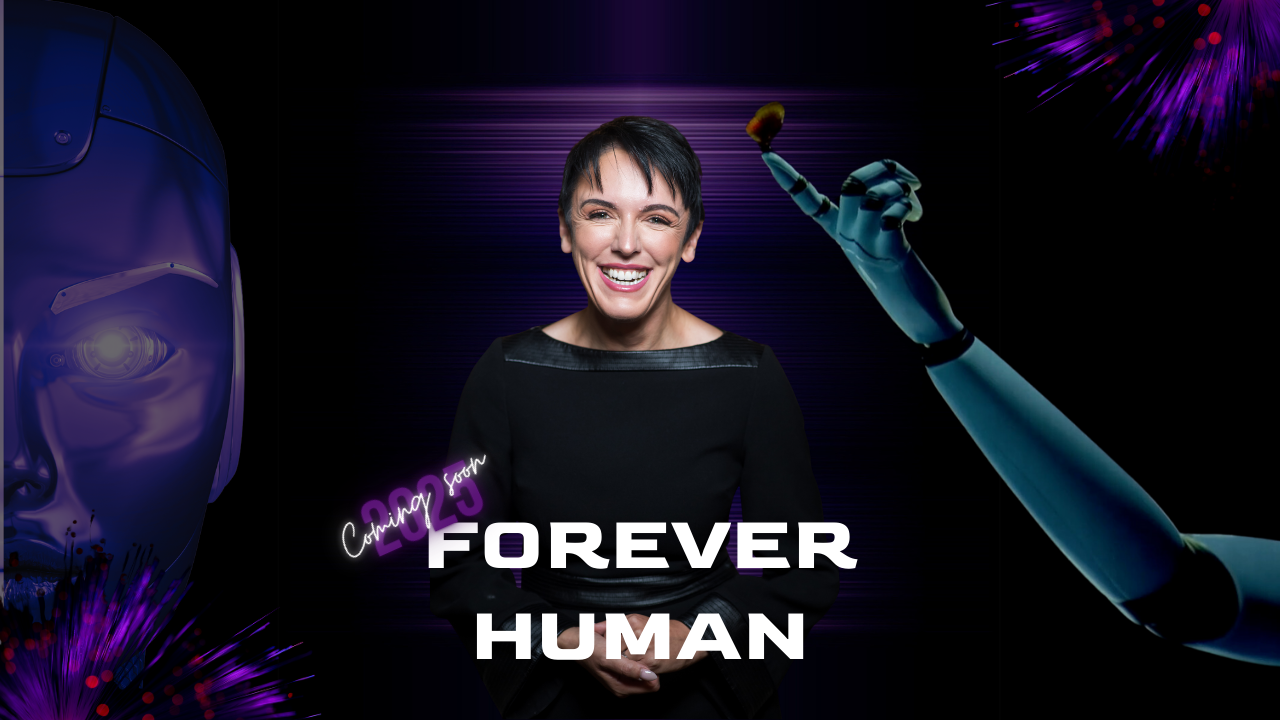
Think you know what’s coming? Think again.
